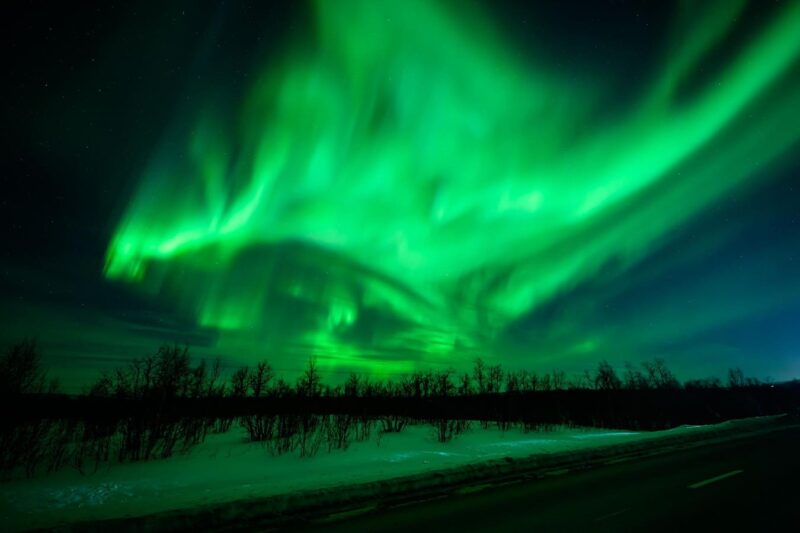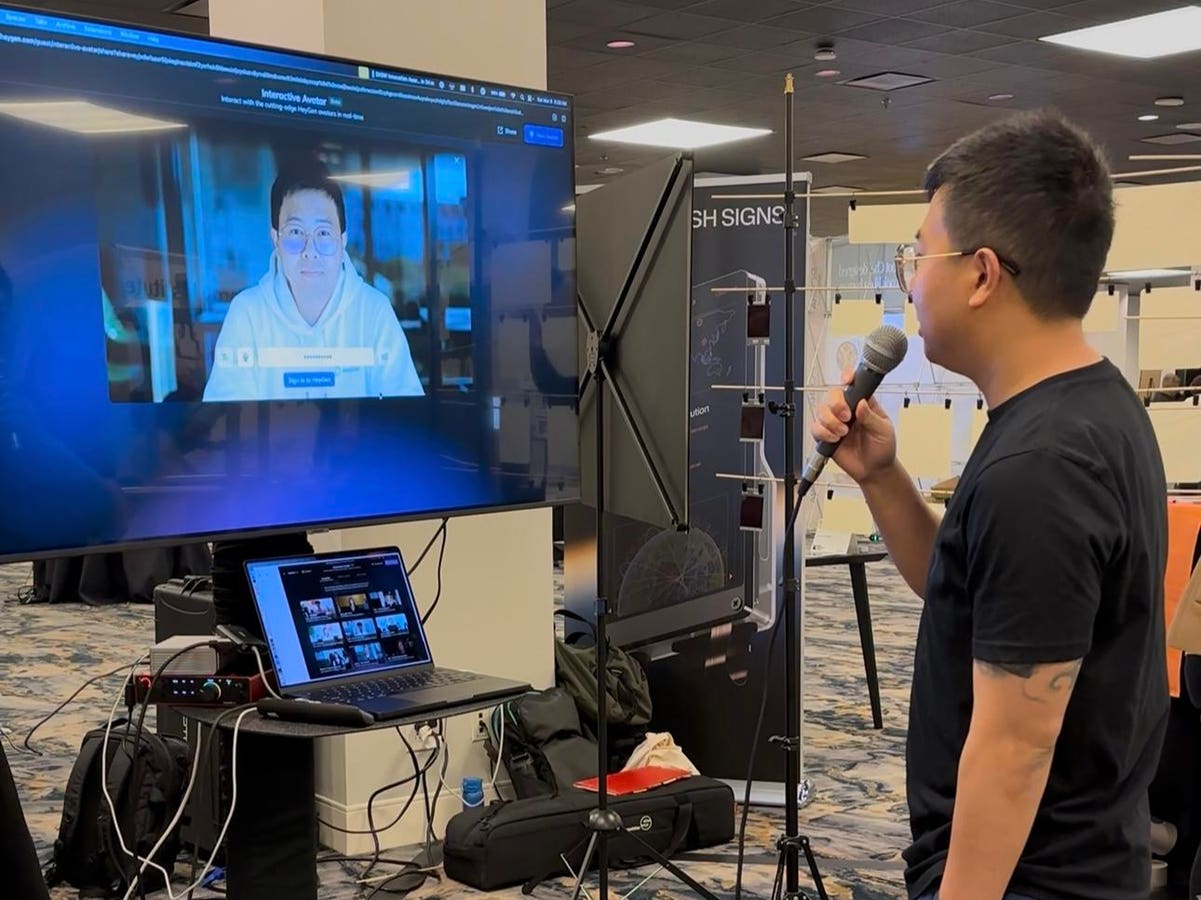Topline
A group of states along the U.S.-Canadian border could see the northern lights Saturday night, according to a forecast from the National Oceanic and Atmospheric Administration.
KIRUNA, SWEDEN – MARCH 7: The Aurora Borealis, commonly known as the Northern Lights, are seen in the sky above Kiruna on March 7, 2024 in Kiruna, Sweden. The area is widely regarded as one of the best places in the world to see the phenomenon, which occurs when energized particles from the sun hit the Earth’s upper atmosphere. (Photo by Leon Neal/Getty Images)
Getty Images
Key Facts
Forecasters at NOAA predict a Kp index of four out of nine for Saturday night, meaning there will be brighter, more active auroral activity for observers in some areas.
The aurora is forecast to be most intense in Alaska, with chances of seeing the natural phenomenon generally increasing the further north observers are from the line.
Where Will The Northern Lights Be Visible?
The northern lights have the highest chance of being seen across northern Canada and Alaska, where the phenomenon might be visible from sunset. There’s a lesser, yet still possible likelihood forecast in the northernmost parts of the U.S., including Washington, Idaho, Montana, North Dakota, Minnesota, Wisconsin, Maine, and Michigan (see map below).
Saturday’s Aurora forecast
National Oceanic And Atmospheric Administration
What’s The Best Way To See The Northern Lights?
The best viewing hours for the northern lights are typically between 10p.m. and 2a.m., according to NOAA, and the agency also encourages observers to be in areas with little to no light pollution. High vantage points can also help the chances of seeing the northern lights. Factors like distance and moonlight can reduce the apparent brightness of aurora borealis.
What’s The Best Way To Photograph The Northern Lights?
Photography experts recommend using an aperture or F-stop of four or less, a wide-angle lens, and a focus set to the furthest possible setting. If using a smartphone, NOAA suggests enabling night mode, disabling flash and relying on a tripod to stabilize the image.
Key Background
The northern lights are the visible result of collisions between electrons, oxygen gases, and nitrogen gases in the atmosphere. The different colors of the aurora are dictated by the gases involved in the energy exchanges. Oxygen emits greens, yellows and reds, while nitrogen emits blues. Auroral activity has intensified in the last 12 months, coinciding with the sun’s “solar maximum,” an 11-year cycle peak in solar flares and coronal mass ejections that are responsible for creating the aurora. NOAA and NASA predict heightened activity into early 2026.
Further Reading








